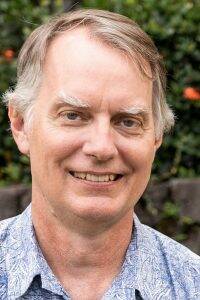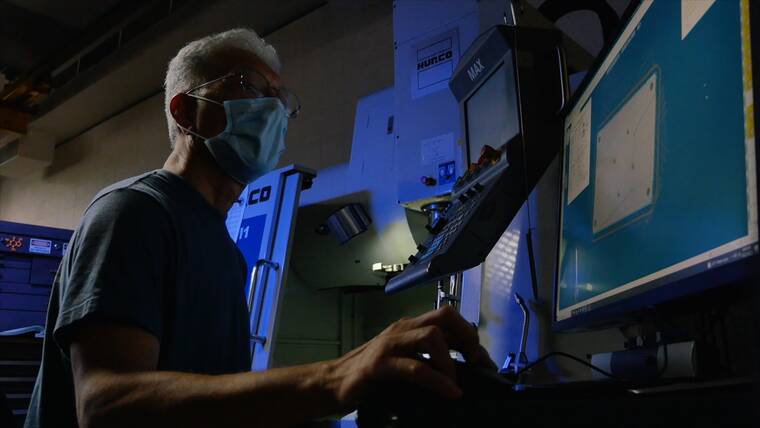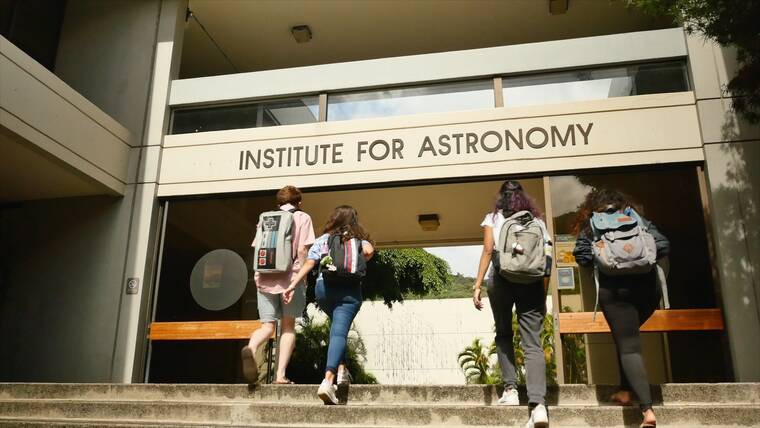The University of Hawaii plans to expand its engineering curriculum to the Big Island in a big way.
Using $2 million in state funds awarded last year, the university will begin designing an expansion to Institute for Astronomy facilities on the UH-Hilo campus, with plans to eventually establish a “space engineering and instrument development center” that designs and builds precision instruments for astronomical facilities.
The project, together with an ongoing UH effort to recruit engineering faculty for both the UH-Hilo and UH-Manoa campuses, aims to improve engineering and STEM education opportunities on the Big Island, while also building up an industry that could provide high-tech jobs to residents.
“We’ll be able to offer preengineering courses at UH-Hilo for the first time,” said IFA Director Doug Simons, explaining UH-Hilo students will be able to take engineering courses offering hands-on experience assembling top-of-the line equipment for clients such as NASA.
While UH-Hilo already takes contracts from clients to construct instruments — last year, NASA granted IFA $4 million to develop new sensors to detect exoplanets, and in 2019 the National Science Foundation awarded IFA $1.9 million to install a flexible adaptive secondary mirror on UH’s 2.2-meter telescope — Simons said the new facility, when built, will allow the university to ramp up its development capacity.
By increasing that capacity, Simons said UH — and, by extension, the state — will be able to capture a greater portion of a highly lucrative industry, as land-based astronomical observatories are constantly upgrading old equipment and securing new instruments, to the tune of tens of millions of dollars.
That said, he added, the facility not only will have applications for the astronomy industry, but also aerospace and other manufacturing programs.
While Simons said the facility “doesn’t need (the Thirty Meter Telescope) to make the model work,” he added the TMT project would significantly benefit from having instrument production available on-island.
Simons said the UH facility is a long ways off, estimating that between the completion of the design, securing the necessary funding, and the construction itself, the project could be completed by the end of the decade.
“I think we’re looking for a 20,000- to 30,000-square-foot facility … an extension of the current IFA building at UH-Hilo,” said Brennon Morioka, dean of UH-Manoa’s College of Engineering. “We’re estimating costs somewhere in the $30 (million), $40 (million), $50 million range.”
UH spokesman Dan Meisenzahl said via email UH will pursue federal support for the actual construction of the facility. When built, he said it likely will be managed by IFA in Hilo, but will remain a joint project between UH-Hilo, IFA and the College of Engineering.
But Morioka said the new engineering curriculum is imminent. Morioka said UH hopes to make job offers to 10 new engineering faculty by the summer — half of whom will be stationed at UH-Hilo — with the first of UH-Hilo’s new engineering classes to begin in the fall semester.
“In addition to the first-year general education and prerequisite courses students would need, we have second-year courses CE 270 Applied Mechanics I and CE 271 Applied Mechanics II available for the upcoming year and will continue to build out more courses,” UH-Hilo Chancellor Bonnie Irwin wrote in an email. “We anticipate being able to accommodate 20 students to begin with.”
Morioka said more courses will be available in the spring 2025 semester.
Simons said IFA will also ramp up instrument production to the extent possible within its current facilities, although he added that it will be fighting with student labs for space.
Ultimately, Simons and Morioka said they are most excited about the project’s ability to offer an academic pathway for Big Island students to pursue engineering degrees without necessarily needing to leave the island, and possibly even find engineering work on the island after graduation.
Currently, Simons said, the engineering jobs that the Hawaii astronomy industry relies upon are predominantly filled by out-of-state employees, many of whom leave after several years.
“It’s an opportunity for students to seek out engineering and STEM careers, and maybe stay on the Big Island for a few more years before finishing their degrees at UH-Manoa and then coming back home to the Big Island,” Morioka said.
Email Michael Brestovansky at mbrestovansky@hawaiitribune-herald.com.













